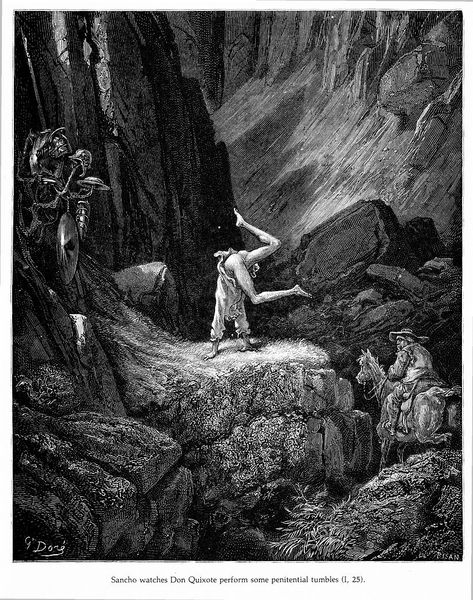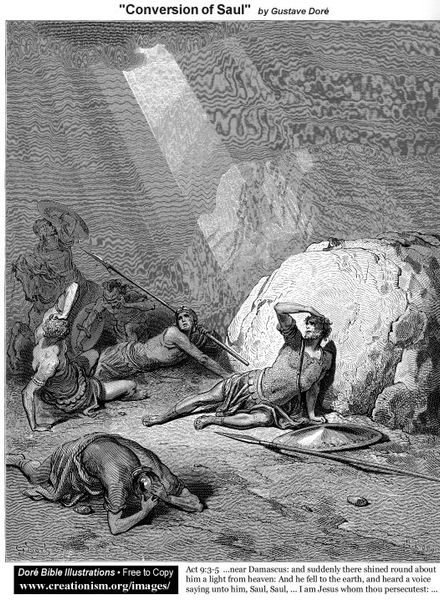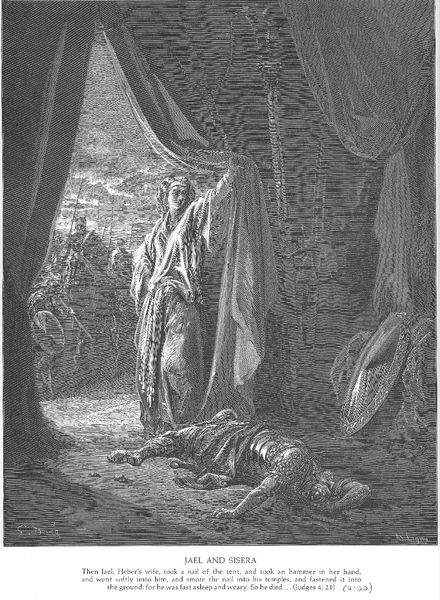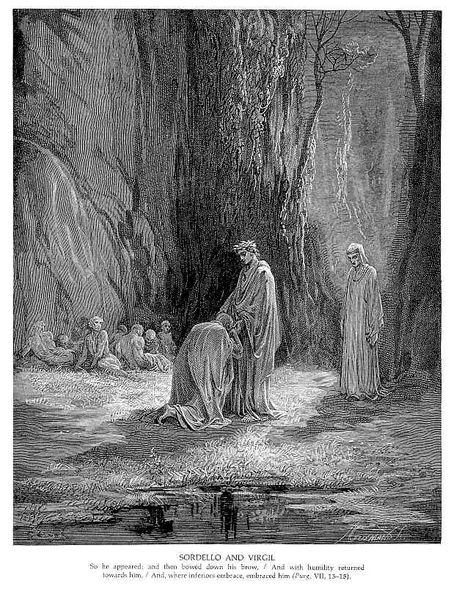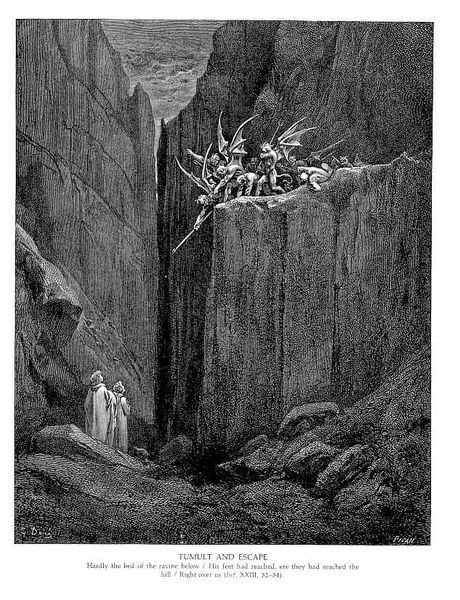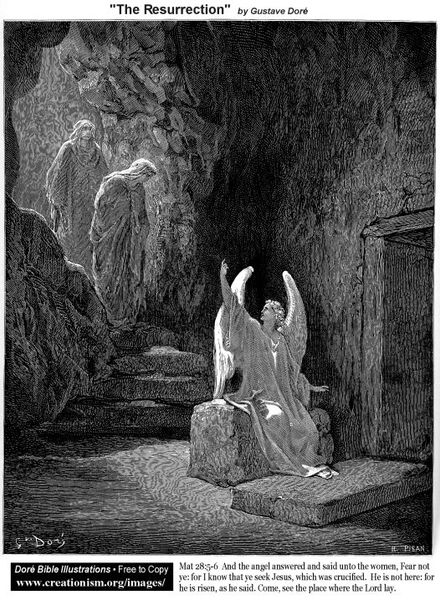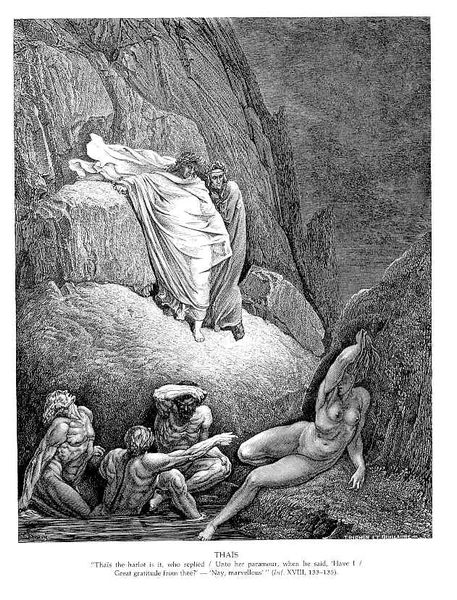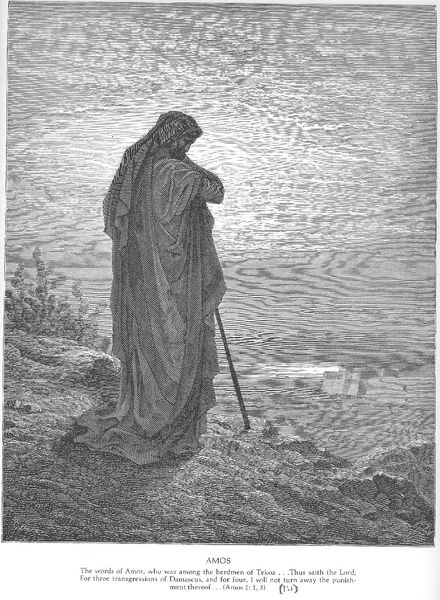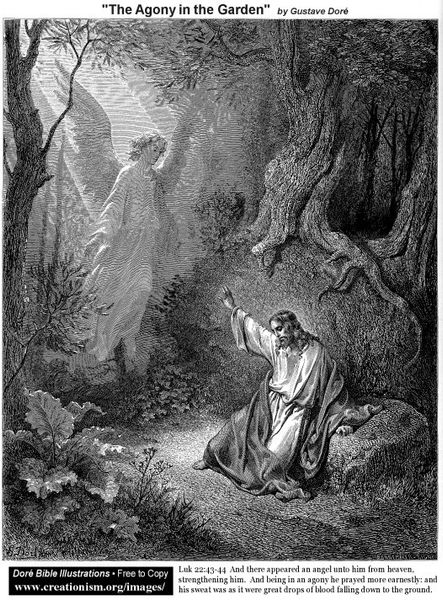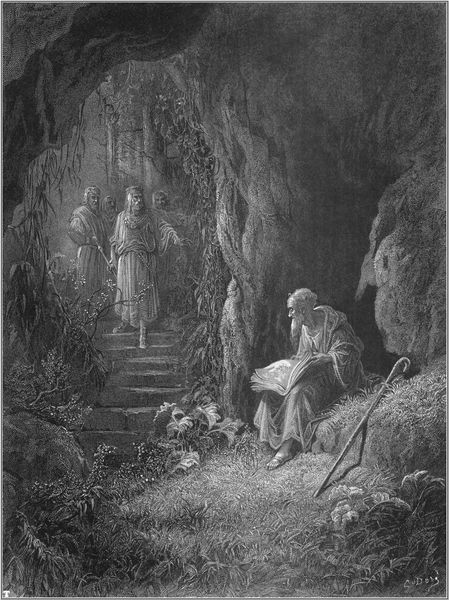
drawing, paper, ink
#
drawing
#
paper
#
ink
Copyright: Public domain
Curator: Oh, the drama! The first thing that leaps out at me is the contrast – the dark, oppressive rocks towering over Hagar and Ishmael. It's a landscape of despair, isn't it? Editor: Indeed. What we see here is Gustave Doré's "Hagar and Ishmael in the Wilderness," rendered in ink on paper. Though undated, it's likely from the mid-19th century, and the image is laden with socio-political implications concerning abandonment, displacement, and even a critique of patriarchal structures. Curator: Yes, it hits you right in the gut, doesn't it? You feel their thirst, their hopelessness. Hagar, her head bowed, is desperate. You know, the cool tones lend such a tragic feel, but there's something strong in the gesture of her posture...it almost feels defiant. Editor: Precisely. Doré employs this chiaroscuro effect, this intense contrast of light and shadow, to heighten the emotional tension. Note how Hagar is positioned between the oppressive rock and her dying son. It's not simply about religious iconography, it's about exploring the precarity of existence and woman's plight. Hagar’s status as a slave is a crucial intersectional point here; her racialized body subjected to further oppression due to gender and class. The image begs us to question the narratives we inherit and to see the stories often pushed to the margins. Curator: The details in the rocks are amazing! They're almost alive, mirroring Hagar’s inner turmoil. Doré uses a lot of black to portray nature pressing in. You almost suffocate looking at that weight. Editor: Absolutely, the very wilderness seems to participate in their suffering. You sense the indifference of the landscape mirroring a broader societal apathy toward the vulnerable. The discarded water skin tells its own story of depleted resources. Hagar and Ishmael here are a case study in abandonment. Curator: When I look at her I wonder how alone she felt in that landscape...it reminds us that hope can spring from the most unexpected sources, in the unlikeliest of places. I guess the tragedy is softened by what she’s trying to do. Editor: Exactly, and the angel is on her way. Still, images such as this push us to examine whose suffering is validated. This pushes viewers to engage with those dispossessed by politics, religion, or circumstance. Thank you! Curator: It's true; those shadows are where change happens, I suppose. Good one, thank you!
Comments
No comments
Be the first to comment and join the conversation on the ultimate creative platform.
